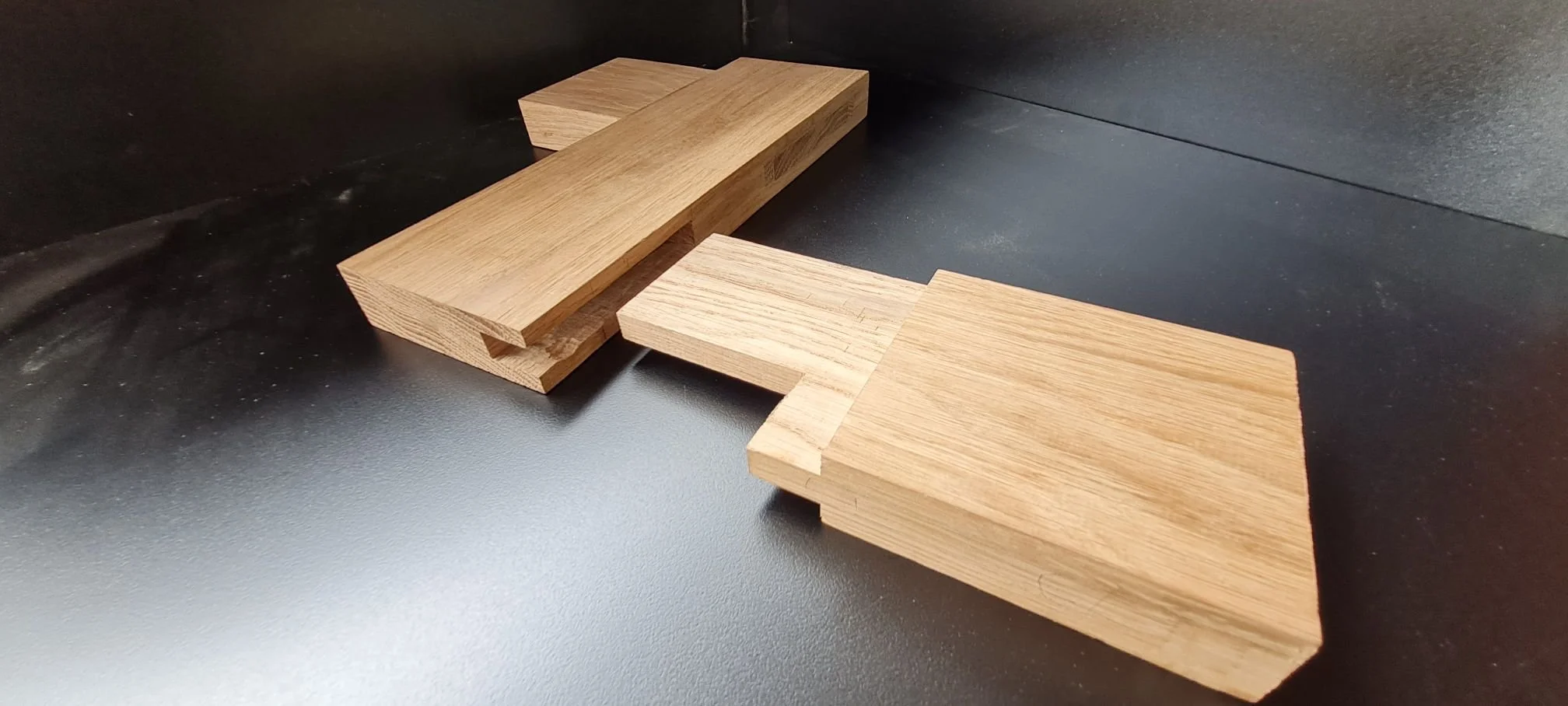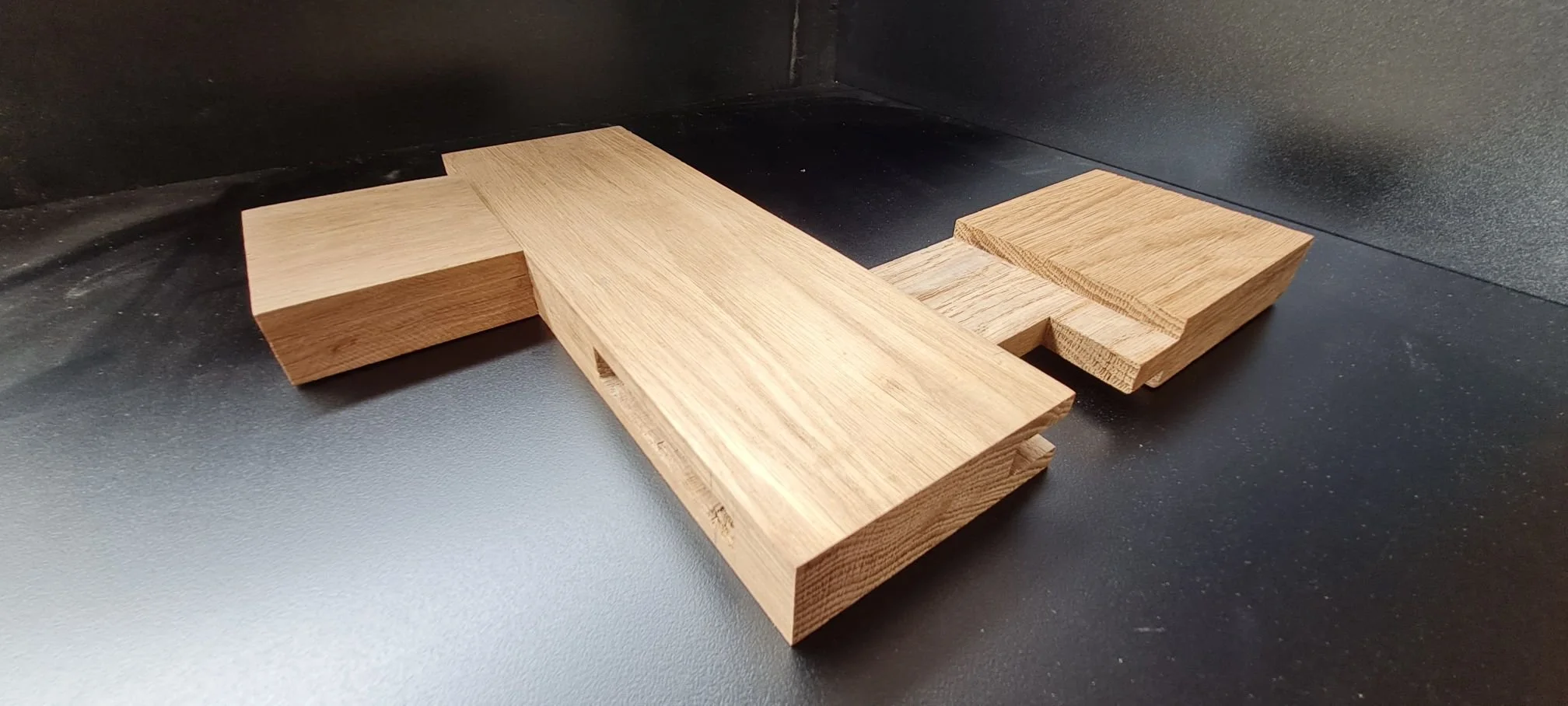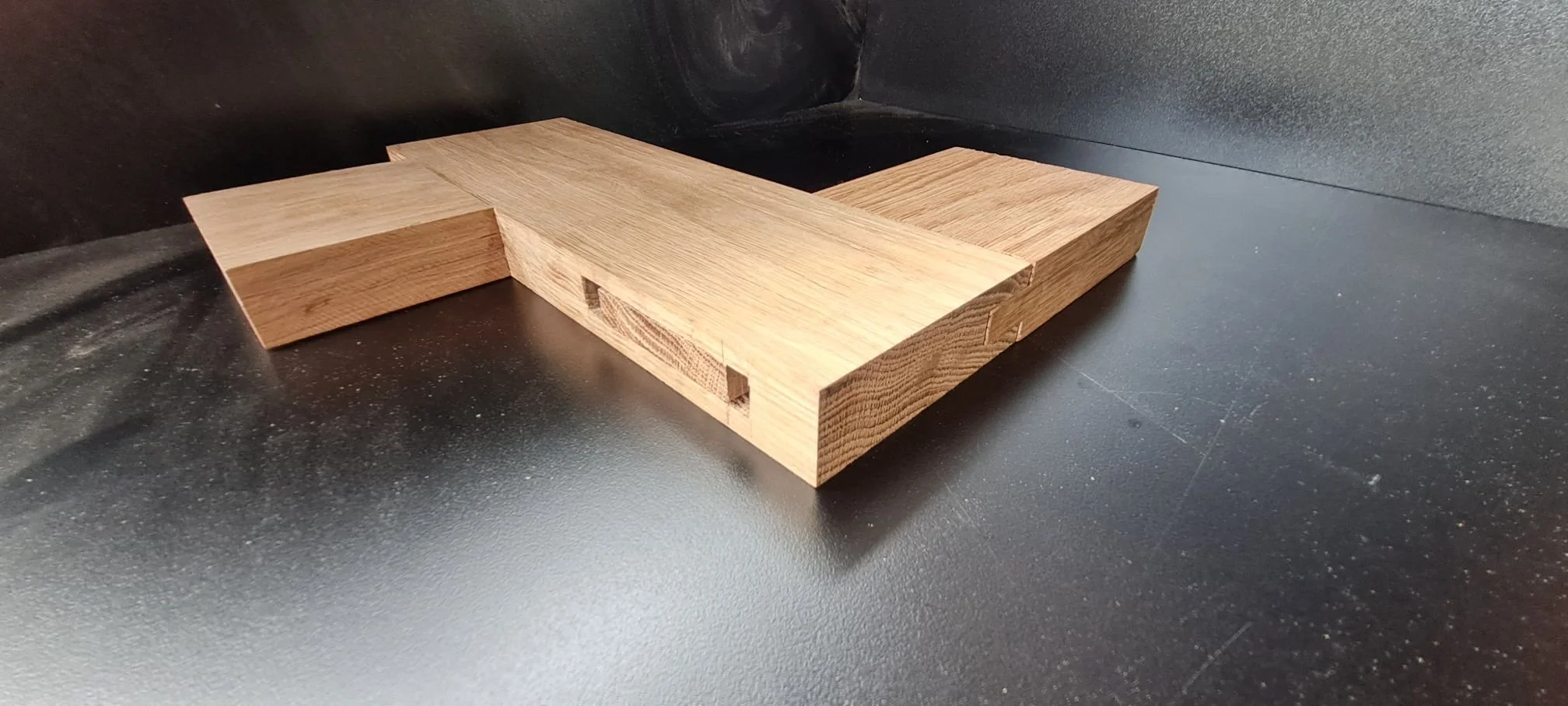Introducing Traditional Joinery Technique
Mortise and Tenon Joints
This traditional joinery technique can be traced back hundreds of years. It is also considered to be one of the strongest joints next to the dovetail joint.
The mortise is the hole cut into the timber and the tenon (or tongue) is the timber shaped to fit into the mortise (or hole). Essentially, the tenon fits snuggly into the mortise, creating a joint that can be held by friction, along with adhesives or fasteners.
Woodworkers Nick and Pete have recently built and installed a pair of barn doors out of American Oak using this traditional technique.
Practicalities of this traditional joinery technique:
They are strong, robust connections that can last centuries.
If solely glue was used rather than mortise and tenon, the glue can disintegrate and wear over time which can lead to a faulty joint.
The best part? The apparent appearance of the design - mortise and tenons adds strength and style. The traditional technique's unique appearance is guaranteed to create curiosity and attention.
It is a time-consuming but worthwhile technique - the woodworkers complete the technique by hand rather than using a mortise machine - the joints show the true quality of craftsmanship.
The Will Brennan Designs team is here to help you create your custom-made design, so get in touch.




